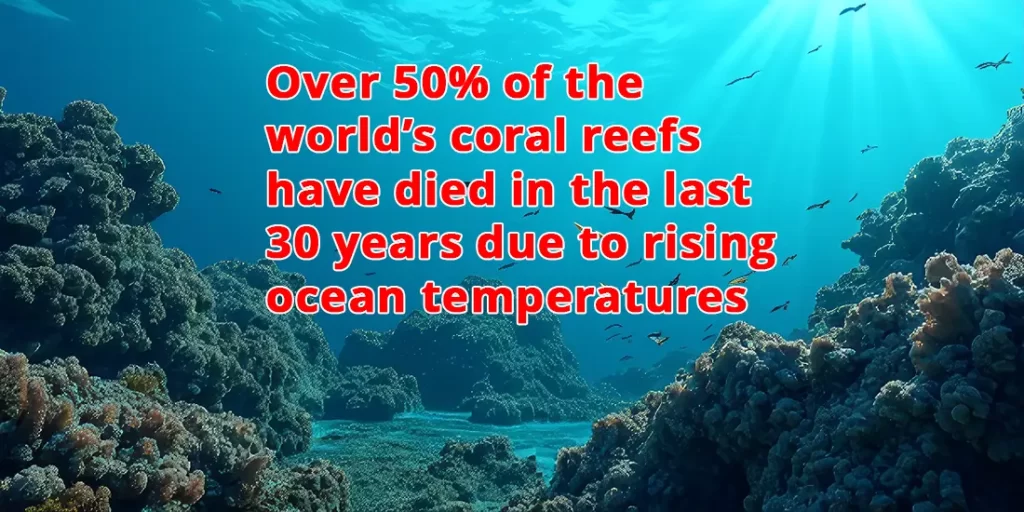
The Alarming Rise in Global Temperatures
Earth’s temperature has been steadily climbing, pushing past records year after year.
Over the past century, global temperatures have increased at an unprecedented rate, with the past decade being the hottest on record. Data from NASA and NOAA shows a clear upward trend, with 2020 tying 2016 as the warmest year ever recorded. This warming trend is not just a number—it has direct impacts on weather patterns, ecosystems, and human livelihoods.
As temperatures continue to rise, the window for making meaningful changes is shrinking. Scientists warn that if global temperatures increase beyond 1.5°C above pre-industrial levels, we may reach a point of no return, where the effects of climate change become irreversible. This makes immediate action crucial to mitigate the most severe outcomes and safeguard our planet’s future.
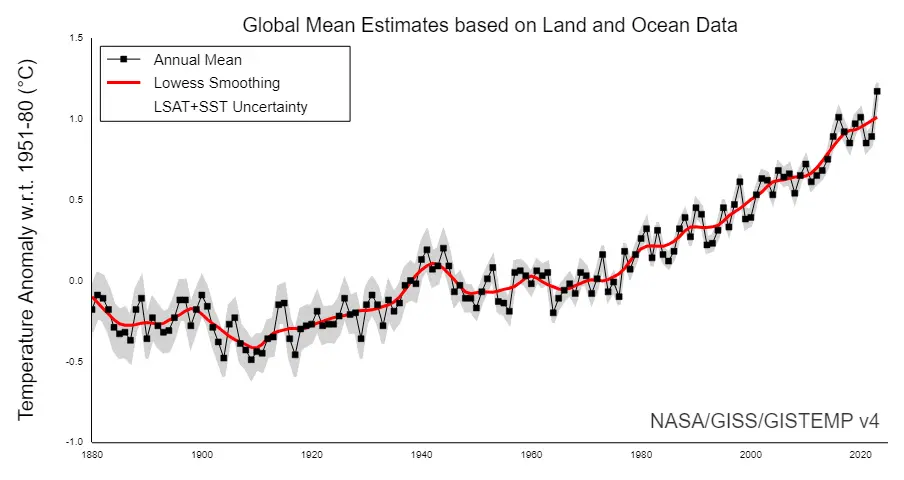
Data Source:
- NASA GISS Surface Temperature Analysis (GISTEMP):
https://data.giss.nasa.gov/gistemp/ - NOAA National Centers for Environmental Information (NCEI):
https://www.ncei.noaa.gov/ - Intergovernmental Panel on Climate Change (IPCC):
https://www.ipcc.ch/reports/
Rising Sea Levels: A Growing Threat to Coastal Communities
As global temperatures rise, so do the oceans—putting millions at risk.
Global sea levels have been rising steadily over the past century, accelerating in recent decades due to the melting of polar ice and the thermal expansion of seawater. According to NOAA, global sea levels have risen by about 8 inches since 1880, with nearly a third of that rise occurring in just the last 25 years.
The impact on coastal communities is profound, leading to more frequent flooding, coastal erosion, and saltwater intrusion into freshwater supplies. If current trends continue, scientists project that sea levels could rise by another 10 to 12 inches in the next 20 years, potentially displacing millions of people from their homes and putting infrastructure worth billions of dollars at risk.
These projections are based on current rates of temperature change. However, they may not fully account for more extreme scenarios, such as the release of methane from thawing permafrost or the loss of reflective ice and snow surfaces. Both could accelerate warming significantly, leading to even faster sea-level rise. Methane, a potent greenhouse gas, could amplify the warming effect, while the loss of ice reduces the Earth’s ability to reflect sunlight, creating a feedback loop that speeds up ice melt.
If these additional factors come into play, the next two decades could see sea levels rise even faster than current estimates, making adaptation measures like seawalls and relocation more urgent than ever.
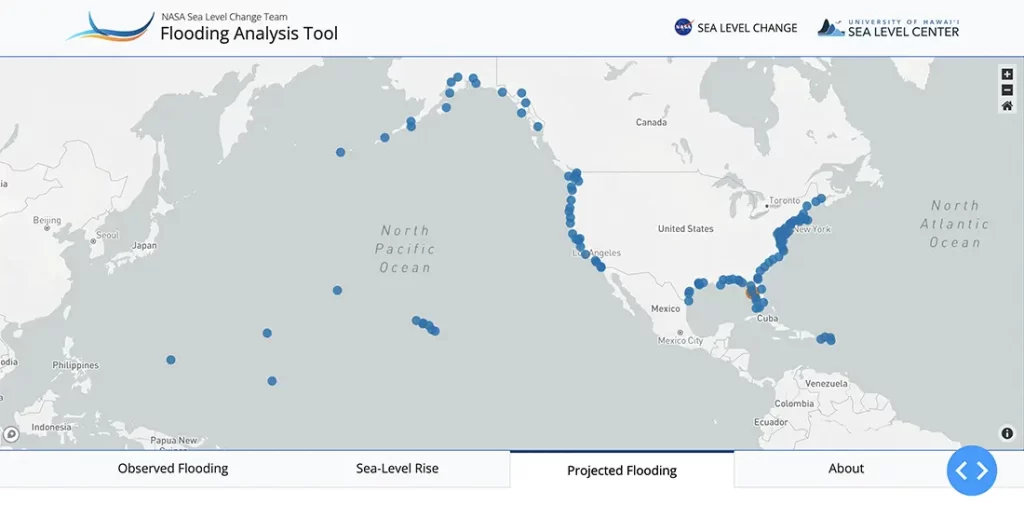
Data Source:
- NOAA Sea Level Rise Data:
https://www.ncei.noaa.gov/access/coastal-sea-level-rise/ - IPCC Special Report on the Ocean and Cryosphere in a Changing Climate (SROCC):
https://www.ipcc.ch/srocc/
Extreme Weather: The New Normal in a Warming World
Climate change is fueling more frequent and intense weather events, from devastating hurricanes to prolonged heatwaves.
The connection between climate change and extreme weather events is becoming increasingly clear. As global temperatures rise, the atmosphere holds more moisture, leading to stronger storms and heavier rainfall. Meanwhile, prolonged heatwaves and droughts are becoming more common, placing pressure on agriculture, water supplies, and human health.
Data from the National Oceanic and Atmospheric Administration (NOAA) shows that the number of billion-dollar weather disasters in the United States has more than doubled since the 1980s. Globally, events like wildfires, floods, and hurricanes are displacing millions and causing unprecedented economic losses. These trends are projected to worsen, making climate adaptation and mitigation efforts all the more urgent.
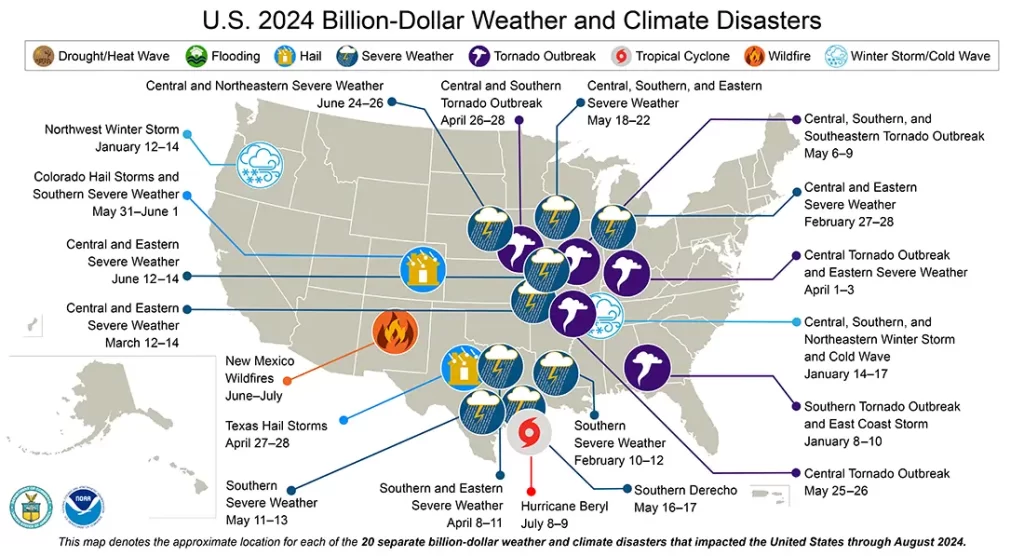
Data Source:
- NOAA Billion-Dollar Weather Disasters: https://www.ncdc.noaa.gov/billions/
- IPCC Climate Change 2022: Impacts, Adaptation, and Vulnerability: https://www.ipcc.ch/report/ar6/wg2/
Fragile Ecosystems: The Toll of a Warming World
From coral reefs to rainforests, climate change is pushing ecosystems to their limits, threatening biodiversity around the globe.
Climate change is having a profound impact on ecosystems, altering habitats and putting countless species at risk. Rising temperatures and shifting weather patterns are causing changes in the timing of seasonal events like migration and flowering, disrupting food chains and breeding cycles. In the oceans, warming waters are leading to widespread coral bleaching, threatening vital marine biodiversity.
The loss of ice in polar regions is endangering species like polar bears and seals, while changes in precipitation patterns are turning lush forests into dry savannahs. According to the Intergovernmental Science-Policy Platform on Biodiversity and Ecosystem Services (IPBES), up to 1 million species are at risk of extinction due to climate change and human activities. These changes not only threaten wildlife but also the ecosystems that humans rely on for clean water, food, and natural disaster protection.
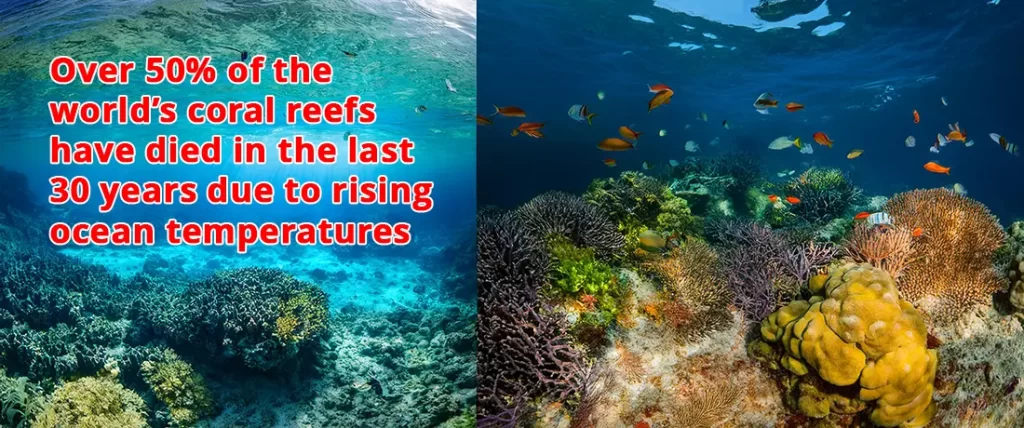
Data Source:
- IPBES Global Assessment Report on Biodiversity and Ecosystem Services: https://ipbes.net/global-assessment
- NOAA Coral Reef Watch: https://coralreefwatch.noaa.gov/
Does this align with what you had in mind? Let me know if you’d like any changes, or if we should proceed to the next section!
